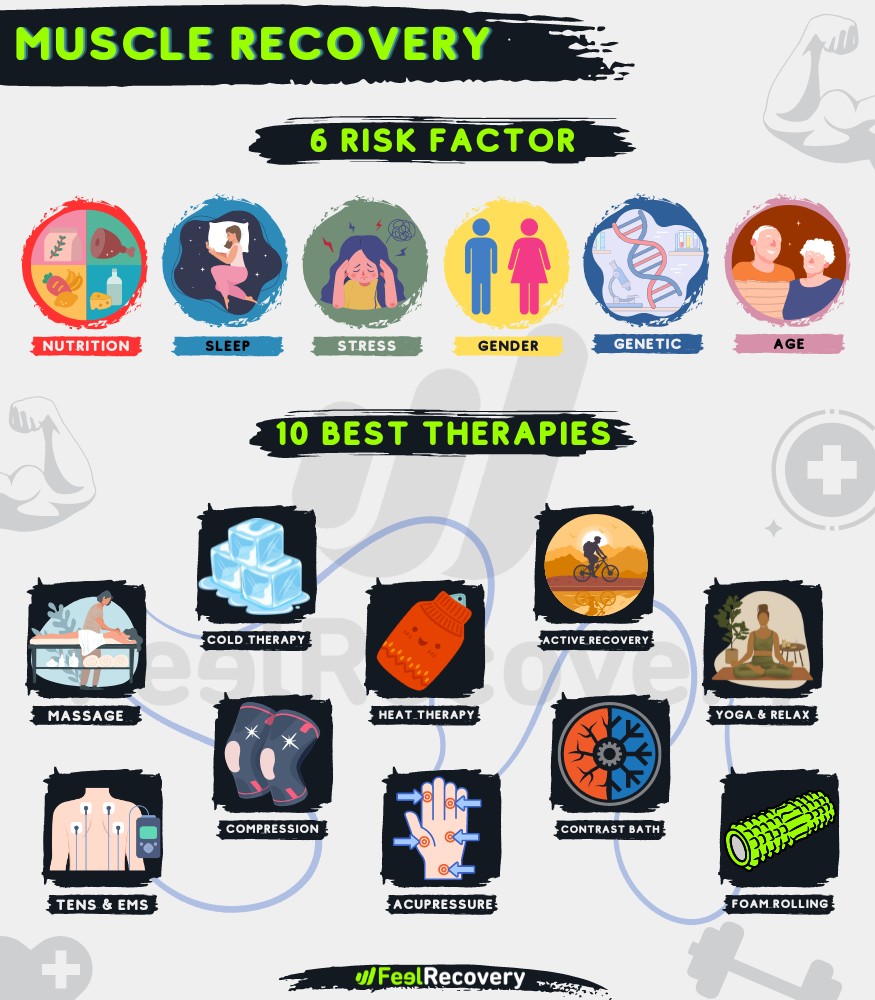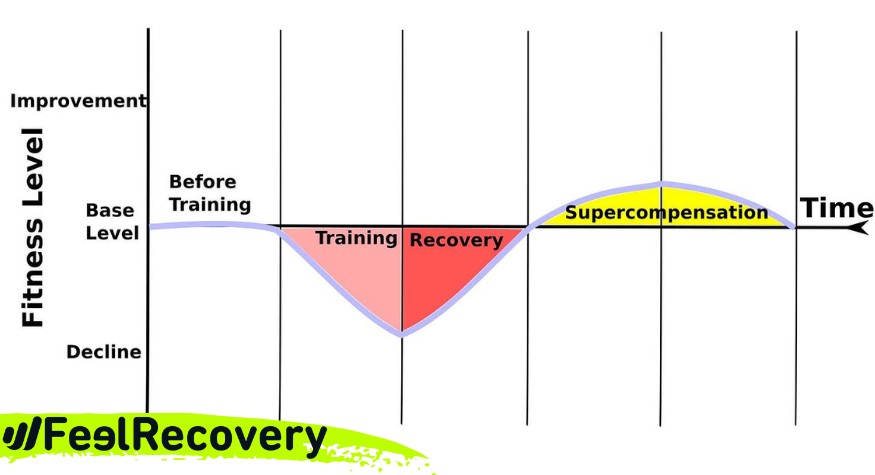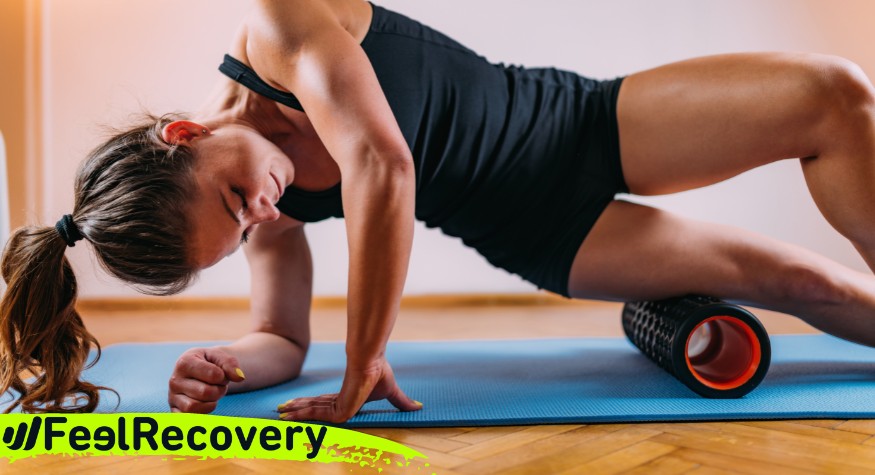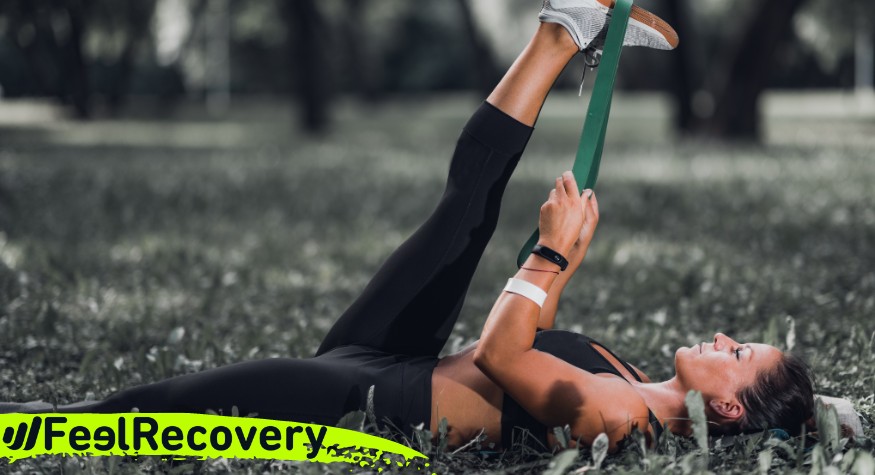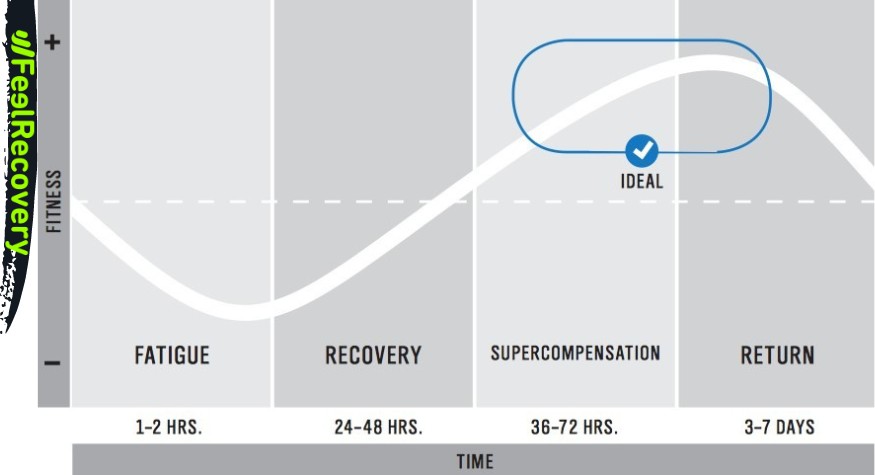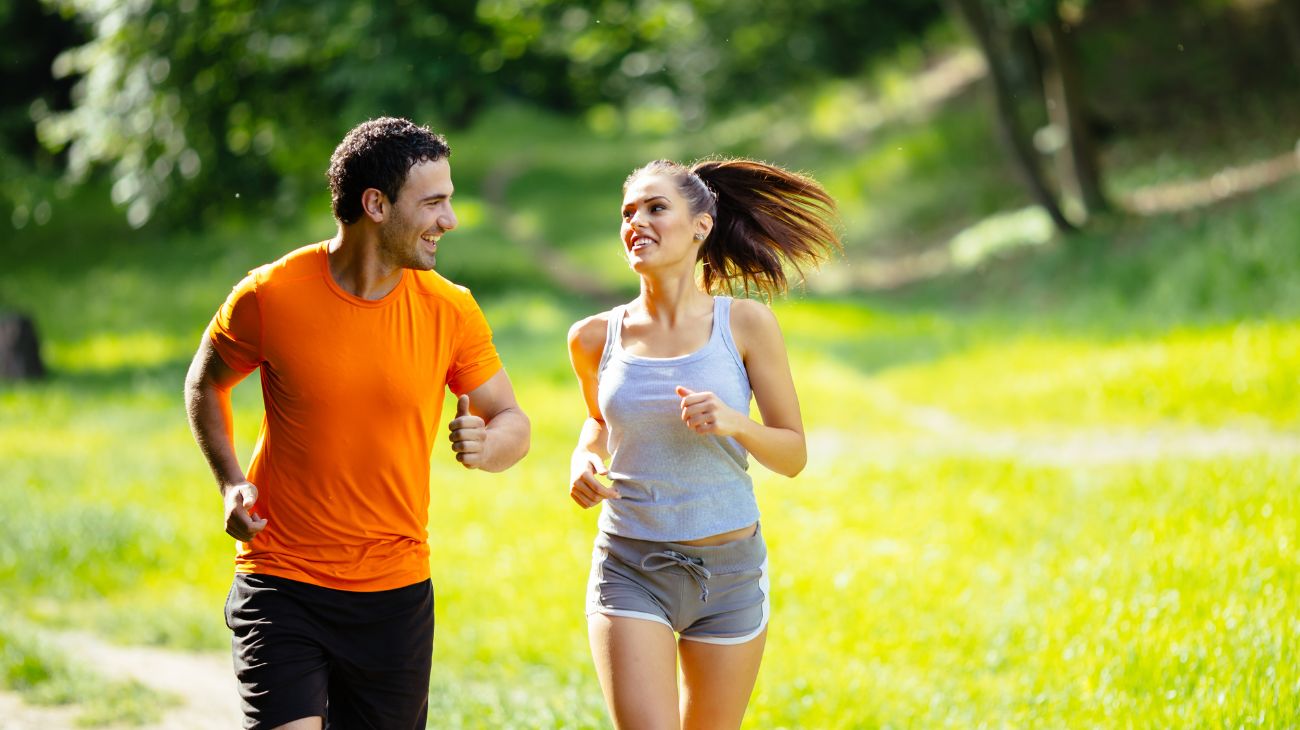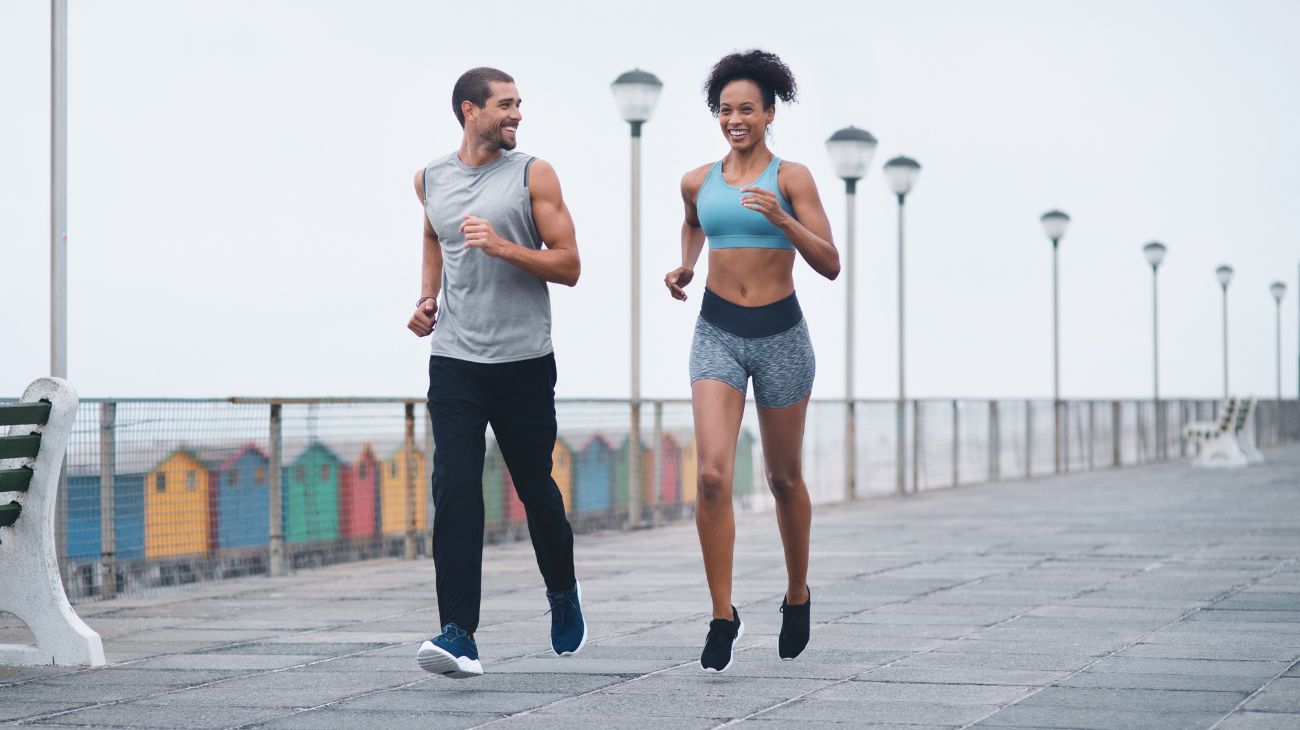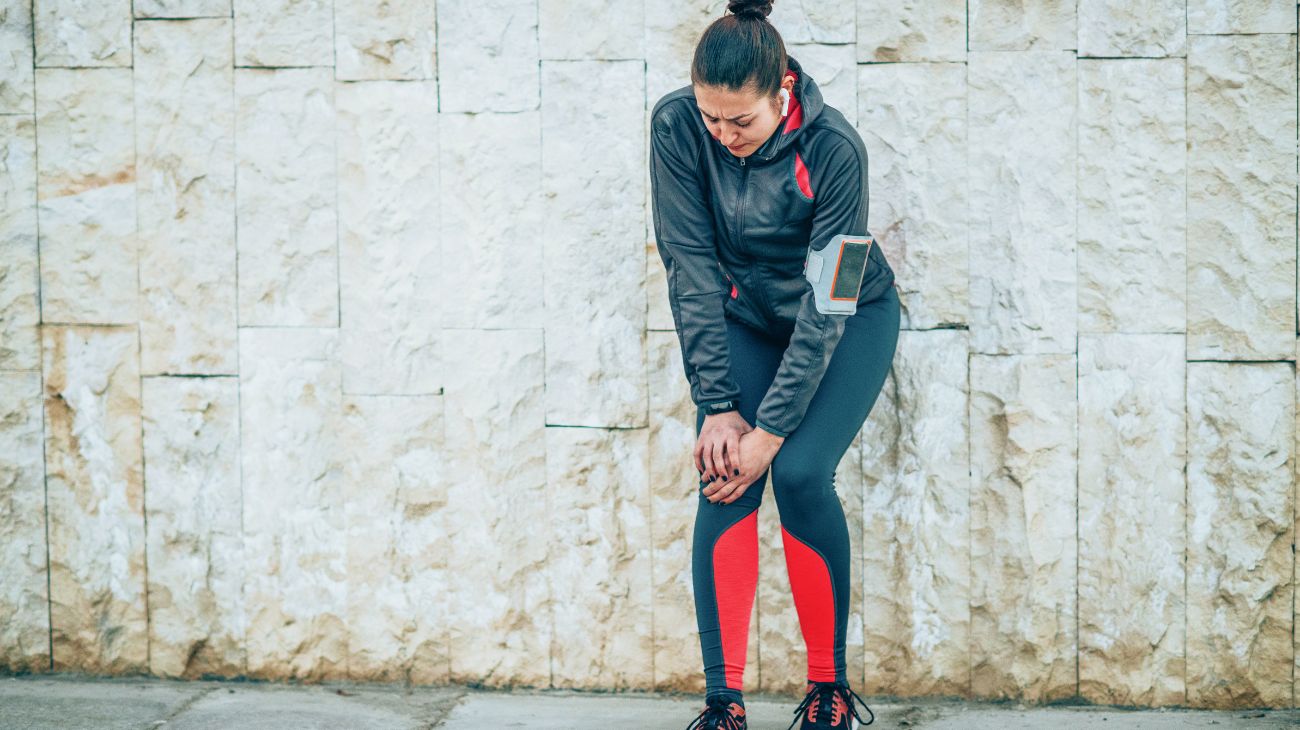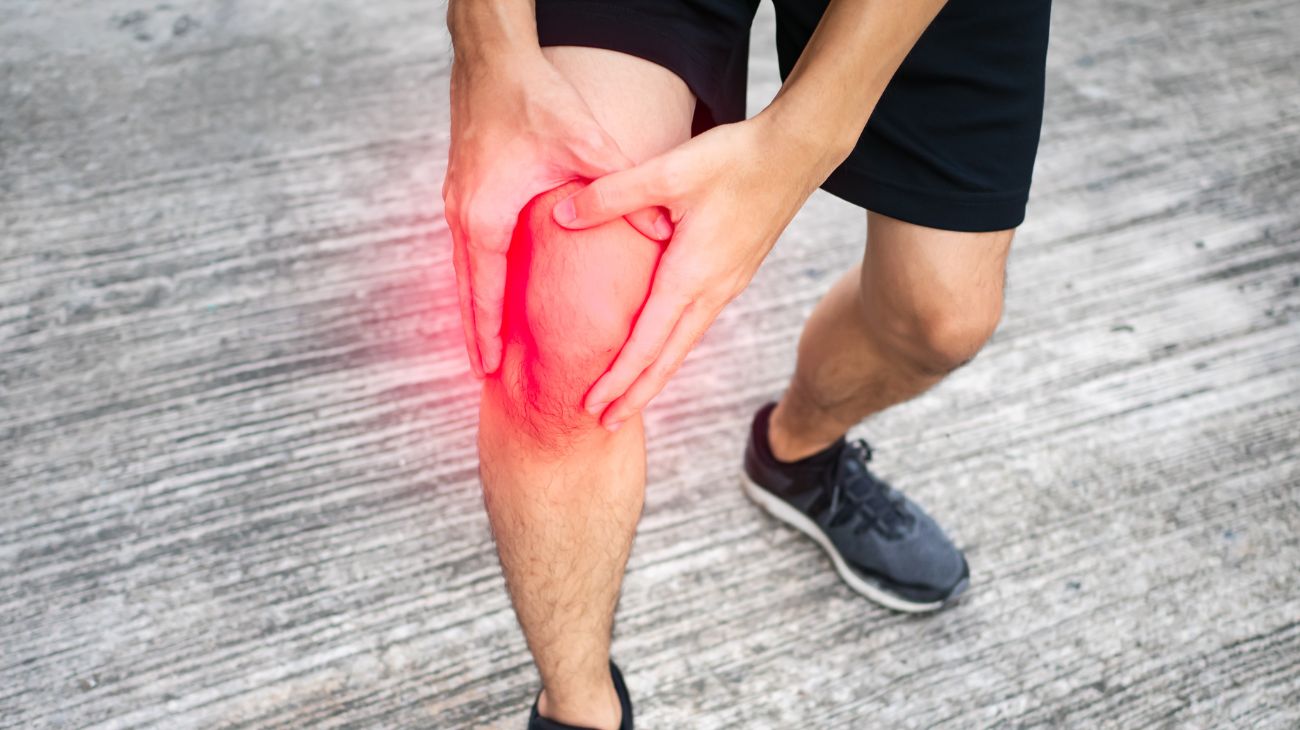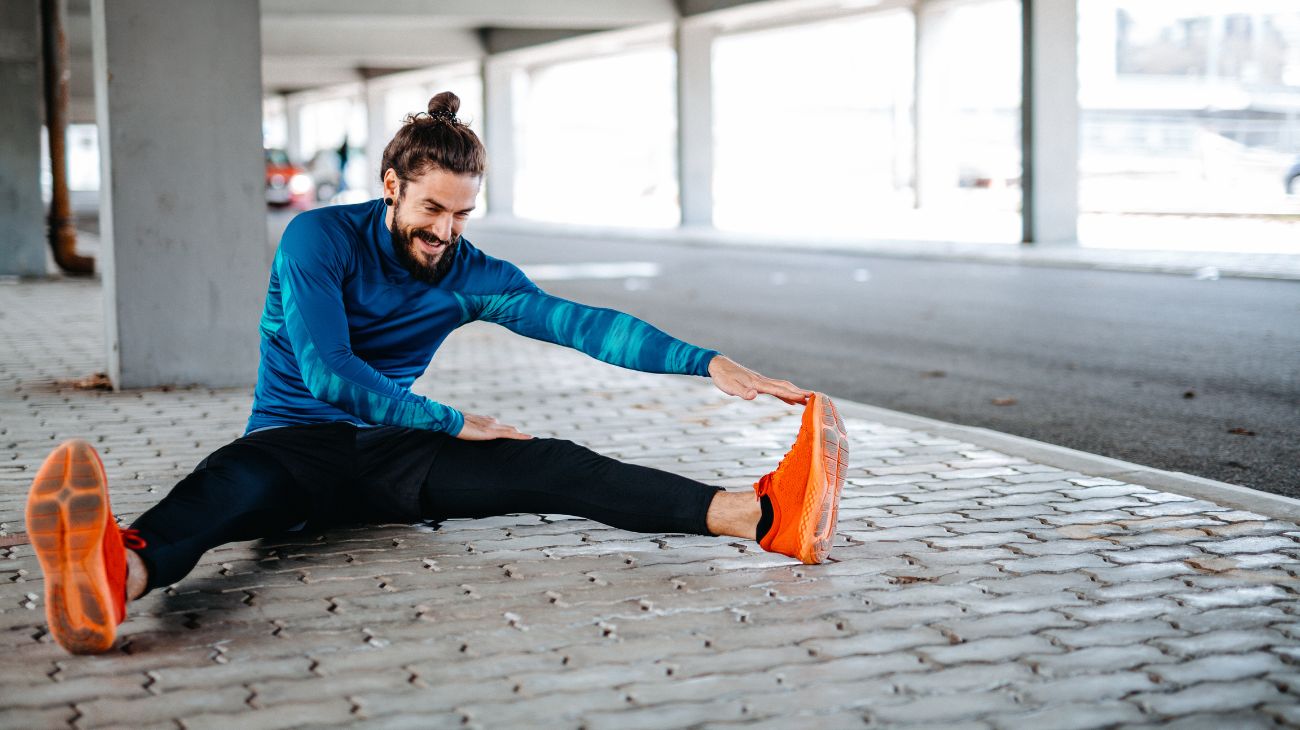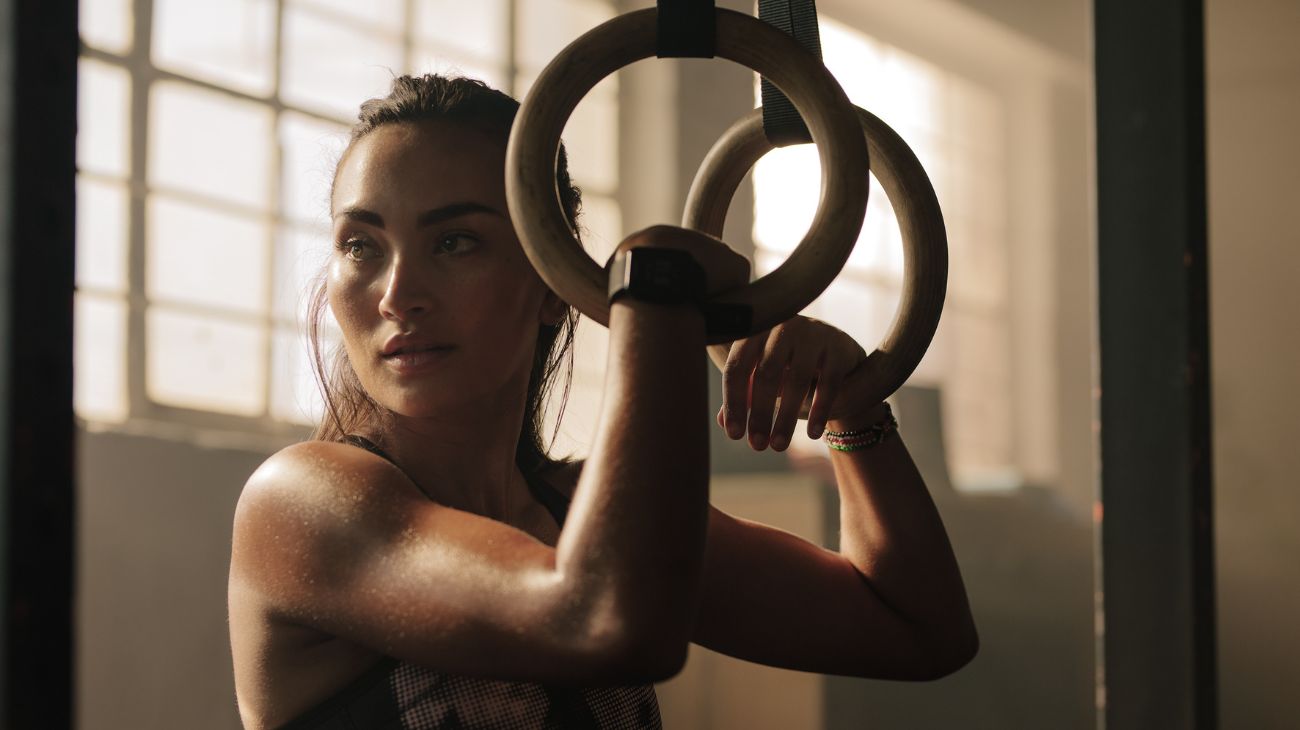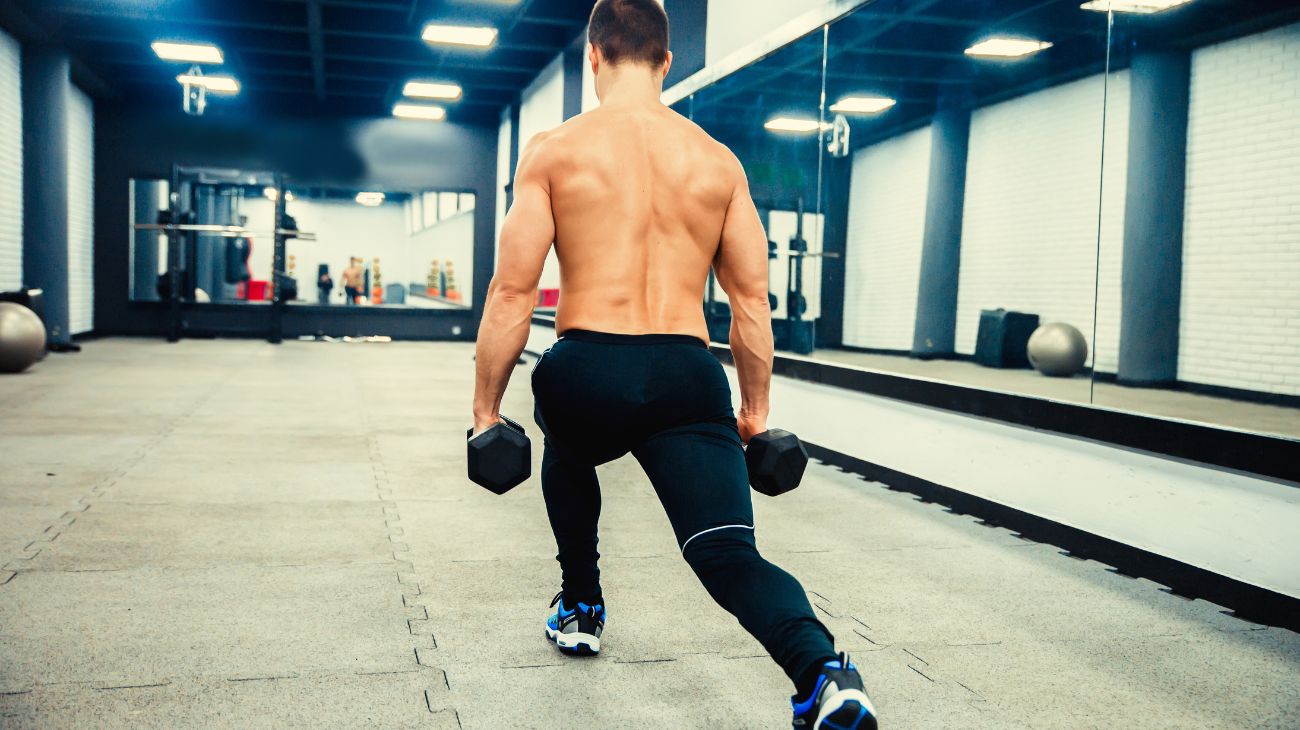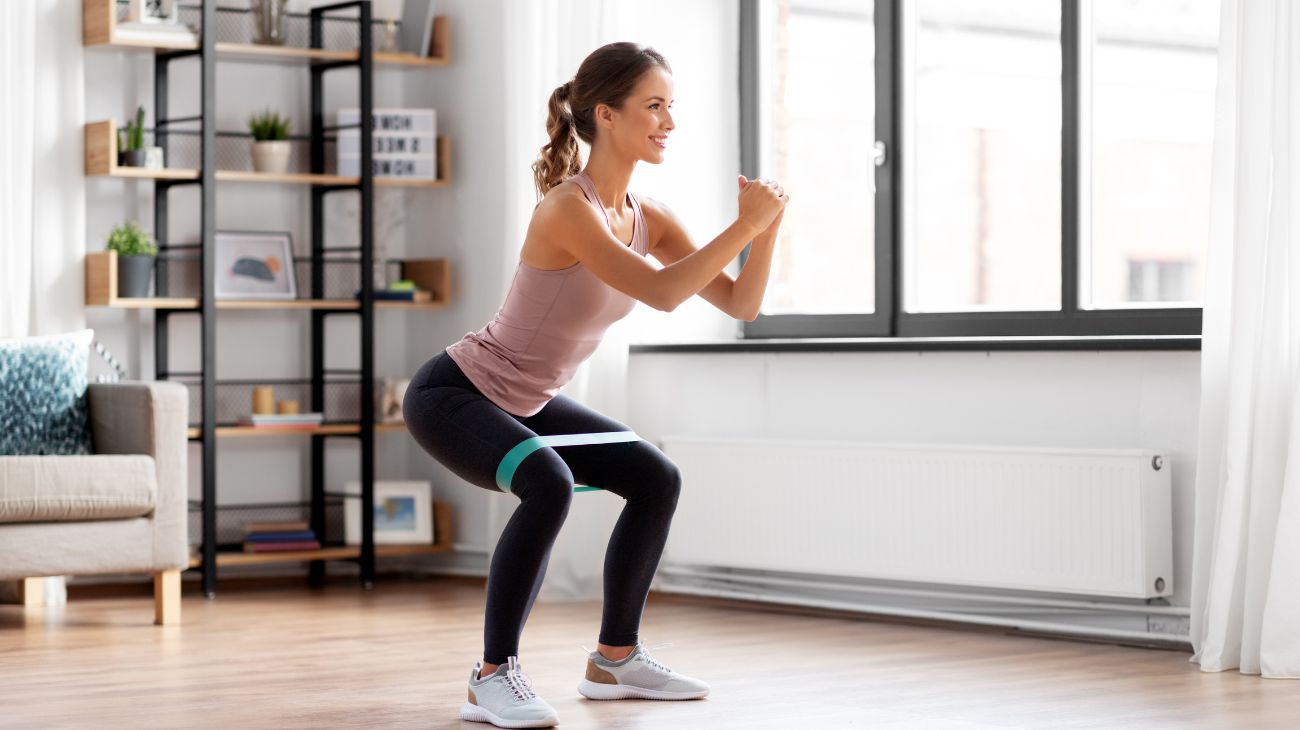Muscle recovery is the process by which muscle tissue repairs and rebuilds itself after damage during physical activity. It is a fundamental aspect of physical therapy, physical training and sports recovery, as it helps to reduce muscle soreness, prevent injury and promote muscle growth and development.
Without proper muscle recovery, the body can experience decreased performance, chronic soreness and increased risk of injury. Incorporating techniques such as rest days, proper nutrition, foam rolling, stretching, therapeutic massage and cold or compression therapy can help speed your muscles' recovery and improve overall physical performance.
Best muscle recovery products
bestseller
-
2 Calf Compression Sleeve (Black/Gray)
£20,95 -
2 Calf Compression Sleeve (Green/Navy)
£20,95 -
2 Calf Compression Sleeve (Pink/Bordeaux)
£20,95 -
2 Thigh Compression Sleeve (Black/Gray)
£20,95 -
2 Thigh Compression Sleeve (Green/Navy)
£20,95 -
2 Thigh Compression Sleeve (Pink/Bordeaux)
£20,95 -
Back Support Belt (Black)
£39,95 -
Back Support Belt (Green)
£39,95 -
Back Support Belt (Pink)
£39,95 -
Microwave Wheat Bag for Neck & Shoulder Pain Relief (Hearts)
£24,95 -
Microwave Wheat Bag for Neck & Shoulder Pain Relief (Oxford)
£24,95 -
Microwave Wheat Bag for Neck & Shoulder Pain Relief (Sport)
£24,95 -
Microwave Wheat Bag for Neck Pain Relief (Hearts)
£20,95 -
Microwave Wheat Bag for Neck Pain Relief (Oxford)
£20,95 -
Microwave Wheat Bag for Neck Pain Relief (Sport)
£20,95 -
Microwaveable Wheat Bag for Pain Relief (Hearts)
£20,95 -
Microwaveable Wheat Bag for Pain Relief (Oxford)
£20,95 -
Microwaveable Wheat Bag for Pain Relief (Sport)
£20,95 -
Shoulder Support Brace (Green)
£24,95
-
Foot Massage Roller for Plantar Fasciitis (Black)
£20,95 -
Foot Massage Roller for Plantar Fasciitis (Green)
£20,95 -
Foot Massage Roller for Plantar Fasciitis (Pink)
£20,95 -
Ice Massage Roller Ball (Black)
£34,95 -
Ice Massage Roller Ball (Green)
£34,95 -
Ice Massage Roller Ball (Pink)
£34,95 -
Shoulder Support Brace (Black)
£24,95 -
Shoulder Support Brace (Pink)
£24,95 -
Soft Density Foam Roller for Recovery (Black)
£34,95 -
Soft Density Foam Roller for Recovery (Green)
£34,95 -
Soft Density Foam Roller for Recovery (Pink)
£34,95 -
Sport Compression Socks (1 Pair) (Black/Gray)
£20,95 -
Sport Compression Socks (1 Pair) (Green/Navy)
£20,95 -
Sport Compression Socks (1 Pair) (Pink/Bordeaux)
£20,95
How does muscle recovery work?
It is a complex process involving the repair and rebuilding of muscle fibers damaged during exercise.
The process of muscle tissue recovery can be divided into several stages:
- Inflammation: when muscle fibers are damaged, the body responds by sending immune cells to the damaged area to initiate the healing process. The result is inflammation, which can cause pain and swelling.
- Regeneration: Following the inflammatory response, the body begins to regenerate new muscle tissue to replace the damaged fibers. This process is initiated by satellite cells, located on the surface of the muscle fibers and responsible for muscle repair and regeneration.
- Remodeling: The newly formed muscle fibers then undergo a remodeling process, in which they align in the direction of the muscle fibers and form new myofibrils. This process may take several weeks to complete, depending on the extent of the muscle injury.
During recovery, the body needs a sufficient supply of nutrients such as proteins, carbohydrates and fats to support the repair and rebuilding of muscle tissue. In addition, rest and recovery periods are essential to allow the body time to repair and regenerate muscle fibers.
It is important to note that the muscle regeneration process can be affected by several factors, such as type and intensity of exercise, age, genetics and general health. By understanding the physiology of muscle rehabilitation and optimizing the factors that influence it, individuals can improve their overall physical performance and reduce the risk of injury.
Risk factors affecting muscle recovery based on science
Here are some of the most important factors that influence this process based on scientific studies:
- Sleep: Getting enough quality sleep is crucial for muscle recovery, as it allows the body to repair and rebuild muscle tissue. Studies have shown that lack of sleep can impair recovery and increase the risk of injury.
- Nutrition: Consuming enough protein and other essential nutrients is critical. Studies have shown that consuming protein immediately after exercise can help stimulate muscle growth and repair.
- Hydration: Staying hydrated is important for overall physical performance. Dehydration can impair muscle function and increase the risk of muscle cramps and injury.
- Active recovery: Performing low-intensity activities, such as walking or cycling, can help improve blood flow and promote your body's recovery.
- Proper training load: Both overtraining and undertraining can impair recovery. Finding the right training load and incorporating rest days is crucial for optimal recovery.
- Genetics: Genetics can play a crucial role, as some individuals may have a greater natural ability to recover from exercise-induced muscle damage.
- Age: May be affected by age, as older individuals may require longer recovery periods and may experience decreased muscle recovery capacity.
In general, adequate sleep, nutrition, hydration, active recovery, adequate training load, genetics and age are important factors that can influence this process.
Techniques and methods for muscle recovery
There are several techniques and methods that can be used, each with its own benefits.
Here are some of the most effective techniques and methods for muscle recovery:
- Stretching: Stretching is an effective method for improving flexibility and reducing muscle tension. Dynamic stretching can be used as part of a warm-up routine, while static stretching can be used during a cool-down routine.
- Massage therapy: Massage therapy involves the use of manual techniques to manipulate soft tissues, which can help reduce muscle soreness and promote recovery. Massage therapy can be performed by a professional massage therapist or by self-massage techniques, such as using a massage ball or foam roller.
- Cold therapy: Cold therapy involves applying cold temperatures to the body, which can help reduce inflammation. This can be done through ice baths, cold showers or using cold packs or compression sleeves.
- Heat therapy: Heat therapy involves applying heat to the body, which can help increase blood flow. It can be done through hot baths, sauna sessions or the use of hot packs.
- Active recovery: Performing low-intensity activities, such as walking or cycling, can help improve blood flow. Active recovery can be used on rest days or as part of a cool-down routine.
- Compression therapy: Compression therapy involves applying pressure to the muscles by wearing compression garments, such as compression sleeves or compression socks. This can help improve blood flow and reduce muscle soreness.
- Acupuncture: Acupuncture involves inserting fine needles into specific points on the body, which can help reduce pain and inflammation.
- Electrical muscle stimulation (EMS): Electrical muscle stimulation involves using low-level electrical currents to stimulate muscles, which can help reduce stiffness and improve recovery of your soft tissues.
- Contrast water therapy: Contrast water therapy involves alternating hot and cold water immersion to improve blood flow and reduce inflammation. This can be done through hot and cold water baths or showers.
- Yoga: Yoga is a form of exercise that involves stretching and strengthening muscles while promoting relaxation and reducing stress. This can help improve muscle regeneration and reduce muscle soreness.
- Nutritional therapy: Nutritional therapy involves optimizing nutrient intake to support recovery, such as consuming adequate amounts of protein, carbohydrates and fats. In addition, supplements such as omega-3 fatty acids and tart cherry juice have been shown to have anti-inflammatory properties.
- Foam rolling: Foam rolling involves using a foam roller to apply pressure to specific areas of the body, which can help release tension. It can be used before or after exercise to reduce stiffness and improve flexibility.
- Sauna: Saunas can be an effective method for sports recovery. The high temperature of the sauna causes blood vessels to dilate, increasing blood flow and promoting relaxation. This can help reduce muscle soreness and stiffness, while providing cardiovascular benefit.
Overall, incorporating a variety of techniques and methods for muscle recovery can help improve overall physical performance and reduce the risk of injury. By finding the techniques and methods that best suit each individual, they can improve their overall fitness.
Best tips to accelerate muscle recovery
Here are some tips to speed up your body's recovery:
- Get more sleep: Sleep is crucial, as it allows the body to repair and regenerate damaged muscle fibers. Aim for 7 to 9 hours of quality sleep each night.
- Take a nap during the day: If you can't get enough sleep at night, taking a nap during the day can help by allowing the body to rest and repair itself.
- Listen to music: Listening to music during and after exercise has been shown to reduce stiffness and improve muscle tissue recovery.
- Reduce your stress levels: Elevated stress levels can lead to increased inflammation in the body, which can delay recovery. Incorporating stress reduction techniques such as meditation or deep breathing can help improve optimal regeneration of your muscles.
- Eat protein in the morning: Eating a protein-rich breakfast can help provide the body with necessary amino acids.
- Eat protein before bed: Having a protein-rich snack before bed can help stimulate muscle protein synthesis during the nightly recovery period.
- Eat some protein before training: Consuming a small amount of protein before exercise can help provide the body with amino acids and reduce muscle breakdown during exercise.
- Eat some protein after training: Consuming protein after training can help stimulate muscle protein synthesis.
- Drink chocolate milk: Chocolate milk contains a combination of carbohydrates and protein, which can help replenish glycogen stores and provide amino acids for your muscles.
- Don't drink alcohol: Alcohol can impair muscle recovery by increasing inflammation and reducing muscle protein synthesis.
- Try tart cherry juice: Tart cherry juice has been shown to have anti-inflammatory properties.
- Drink plenty of water: Staying hydrated is important, as it helps transport nutrients to the muscles and flush out waste products.
- Rest your muscles: Allowing muscles to rest and recover between workouts is crucial for injury prevention.
- Take an anti-inflammatory: If you experience muscle soreness or inflammation, taking an anti-inflammatory medication such as ibuprofen can help reduce symptoms.
- Try compression garments: Compression garments can help improve blood flow and reduce muscle soreness during and after exercise.
- Use a foam roller: Foam roller can help reduce muscle soreness by increasing blood flow and reducing muscle tension.
- Take a cold bath: Immersion in cold water has been shown to reduce stiffness and improve by reducing inflammation and improving blood flow.
- Get a massage: Massage therapy can help improve your fitness by reducing muscle tension, increasing blood flow and reducing inflammation.
Muscle recovery time chart and time by age
Muscle tissue recovery time can vary based on several factors, such as severity of muscle damage, age and overall health.
Here is a general muscle recovery time chart:
- Mild muscle strain: 1-3 weeks
- Moderate muscle strain: 3-6 weeks
- Severe muscle strain: 6-12 weeks or more
It is important to keep in mind that these are only estimates and individual recovery time may vary. Age can also influence the regeneration time of your muscles. As we age, our recovery time tends to increase due to a decrease in muscle mass and slower healing time.
Here is a general guide to time by age:
- Teenagers: 2-3 days
- 20-30 years: 3-4 days
- 40-50 years old: 4-5 days
- 60 years and older: 5-7 days
Again, these are general guidelines only and individual recovery time may vary depending on a variety of factors.
F.A.Q: Frequently asked questions
References
- Halson, S. L. (2013). Recovery techniques for athletes. Sports Science Exchange, 26(120), 1-6. https://secure.footprint.net/gatorade/prd/gssiweb/pdf/120_RecoveryTechniquesforAthletes-Halson_SSE.pdf
- Dupuy, O., Douzi, W., Theurot, D., Bosquet, L., & Dugué, B. (2018). An evidence-based approach for choosing post-exercise recovery techniques to reduce markers of muscle damage, soreness, fatigue, and inflammation: a systematic review with meta-analysis. Frontiers in physiology, 403. https://www.frontiersin.org/articles/10.3389/fphys.2018.00403/full
- Versey, N. G., Halson, S. L., & Dawson, B. T. (2013). Water immersion recovery for athletes: effect on exercise performance and practical recommendations. Sports medicine, 43, 1101-1130. https://link.springer.com/article/10.1007/s40279-013-0063-8
- Kellmann, M. (2010). Preventing overtraining in athletes in high‐intensity sports and stress/recovery monitoring. Scandinavian journal of medicine & science in sports, 20, 95-102. https://onlinelibrary.wiley.com/doi/full/10.1111/j.1600-0838.2010.01192.x
- Dattilo, M., Antunes, H. K. M., Medeiros, A., Neto, M. M., Souza, H. S. D., Tufik, S., & De Mello, M. T. (2011). Sleep and muscle recovery: endocrinological and molecular basis for a new and promising hypothesis. Medical hypotheses, 77(2), 220-222. https://www.sciencedirect.com/science/article/abs/pii/S0306987711001800
- Hohenauer, E., Taeymans, J., Baeyens, J. P., Clarys, P., & Clijsen, R. (2015). The effect of post-exercise cryotherapy on recovery characteristics: a systematic review and meta-analysis. PloS one, 10(9), e0139028. https://journals.plos.org/plosone/article?id=10.1371/journal.pone.0139028
- Weerapong, P., Hume, P. A., & Kolt, G. S. (2005). The mechanisms of massage and effects on performance, muscle recovery and injury prevention. Sports medicine, 35, 235-256. https://link.springer.com/article/10.2165/00007256-200535030-00004
- Nédélec, M., McCall, A., Carling, C., Legall, F., Berthoin, S., & Dupont, G. (2012). Recovery in soccer: part I—post-match fatigue and time course of recovery. Sports medicine, 42, 997-1015. https://link.springer.com/article/10.1007/BF03262308
- Mehta, P., Dhapte, V., Kadam, S., & Dhapte, V. (2017). Contemporary acupressure therapy: Adroit cure for painless recovery of therapeutic ailments. Journal of traditional and complementary medicine, 7(2), 251-263. https://www.sciencedirect.com/science/article/pii/S222541101630044X
- Torres, R., Pinho, F., Duarte, J. A., & Cabri, J. M. (2013). Effect of single bout versus repeated bouts of stretching on muscle recovery following eccentric exercise. Journal of science and medicine in sport, 16(6), 583-588. https://www.sciencedirect.com/science/article/abs/pii/S1440244013000042













































































